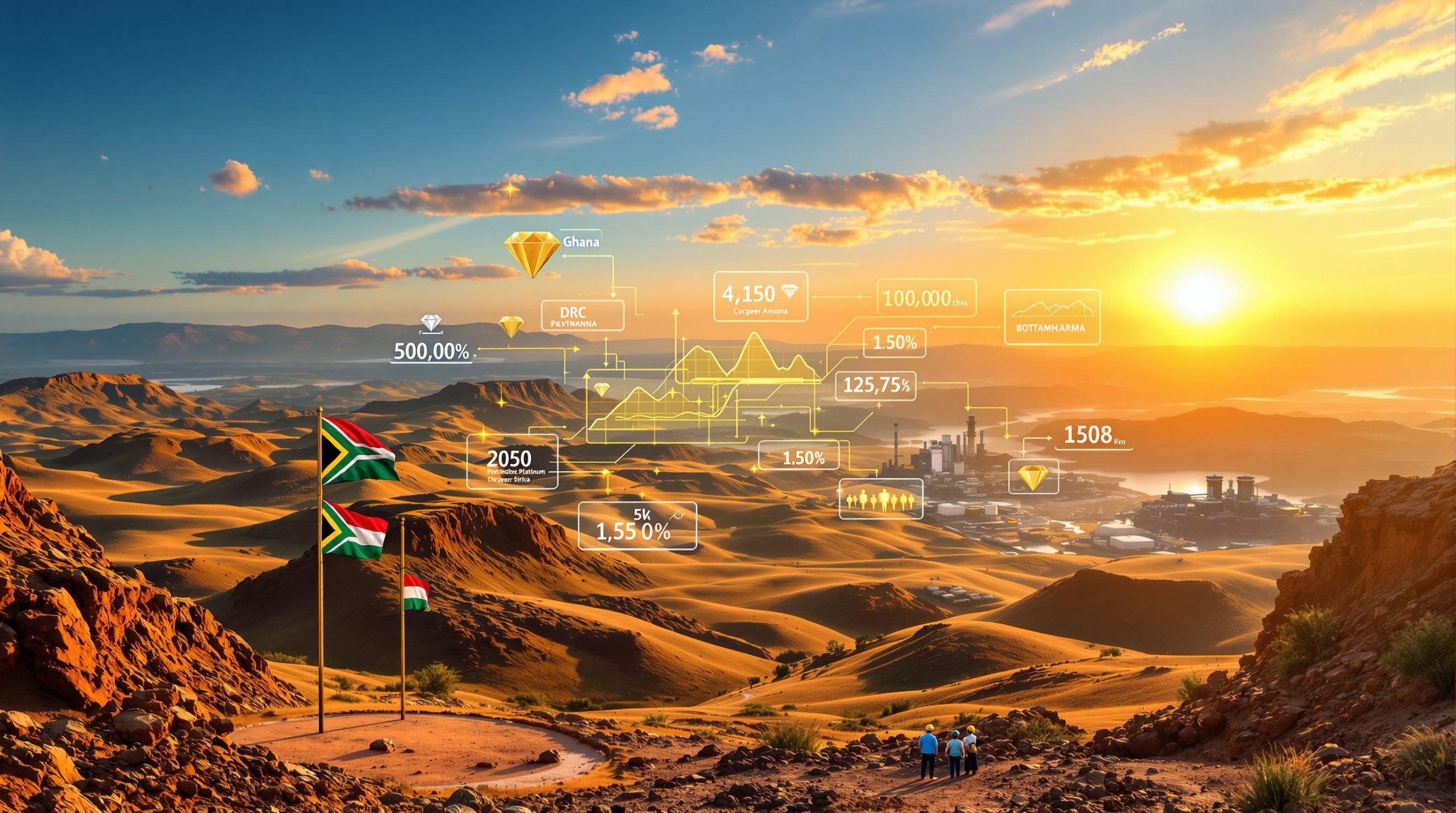What Are China's New Rare Earth Export Restrictions?
China has recently implemented stringent controls on rare earth exports, marking a significant escalation in the ongoing trade tensions with the United States. The restrictions specifically target heavy rare earth elements, which are crucial components in advanced technology manufacturing. This move appears to be in direct retaliation for US tariff increases originally implemented during the Trump administration but maintained under current policy.
Understanding the Recent Export Controls
The new restrictions represent a calculated strategic move by China to leverage its dominant position in the global rare earth supply chain. Export licenses that previously moved through Chinese customs relatively quickly now require processing times of at least 45 days, creating significant delays for international buyers and manufacturers.
According to industry sources, this administrative slowdown effectively functions as a soft embargo, allowing China to maintain technical compliance with World Trade Organization (WTO) rules while still disrupting supply chains. The Chinese government has framed these measures as part of environmental protection efforts, though analysts widely interpret them as geopolitical market strategies.
Targeted Materials and Components
The restrictions specifically focus on six heavy rare earth elements that China refines almost exclusively. These materials are critical components in products ranging from electric vehicles and wind turbines to sophisticated military hardware and consumer electronics.
Particularly affected are permanent magnets containing neodymium, dysprosium, and terbium – essential components in electric motors, drone technology, and defense systems. China produces approximately 90% of the world's rare earth magnets, giving it extraordinary leverage in this specialized market.
Industry reports indicate that dysprosium prices surged approximately 30% month-over-month following the announcement of these critical mineral export restrictions, demonstrating the immediate market impact of China's policy shift.
Why Do China's Rare Earth Restrictions Matter Globally?
The significance of these restrictions extends far beyond simple trade disruptions, potentially affecting everything from renewable energy transitions to national security across multiple countries.
China's Dominance in the Rare Earth Supply Chain
China's near-monopoly position in rare earth processing represents decades of strategic investment. While rare earth elements are not particularly rare in the earth's crust, the processing capabilities to refine them into usable materials are highly concentrated in China.
The country refines nearly all global output of the six restricted heavy rare earths and accounts for 90% of global rare earth magnet production. This concentration of capability didn't happen by accident – it reflects long-term Chinese industrial policy aimed at dominating critical mineral supply chains.
According to the U.S. Geological Survey, approximately 98% of U.S. rare earth imports are sourced from China, creating an extreme dependency that these new restrictions directly target. The vulnerability is particularly acute because establishing alternative supply chains requires years of development and billions in investment.
Strategic Importance of Rare Earth Elements
Rare earth elements have become indispensable to modern technology, with applications across virtually every advanced industry. Their unique magnetic, luminescent, and electrochemical properties make them irreplaceable in many applications.
Defense applications are particularly vulnerable to supply disruptions. F-35 fighter jets require approximately 417 kg of rare earths per unit, while missile guidance systems rely on samarium-cobalt magnets using Chinese-sourced samarium. Without steady access to these materials, military readiness could be compromised.
Clean energy technologies are similarly dependent on rare earth elements. Approximately 90% of electric vehicle motors and 80% of wind turbines rely on rare earth magnets. As Dr. Eugene Gholz of the Defense Analysis Group notes, "Without alternatives, the West faces a decade-long gap in magnet production."
How Are Global Markets Responding to the Restrictions?
The market reaction to China's export restrictions has been swift and pronounced, with implications rippling through global commodities market insights.
Price Impacts and Market Volatility
Prices for critical rare earth elements have surged dramatically since the restrictions were announced. Dysprosium, essential for high-temperature applications in motors, reached $300/kg in April 2025, up from $230/kg just one month earlier. This 30% price increase reflects both immediate supply concerns and speculative market behavior.
Market analysts report heightened volatility as buyers scramble to secure supplies. Trading volumes of rare earth futures have increased substantially, with many contracts now commanding significant premiums for guaranteed delivery.
International manufacturers are increasingly caught between absorbing these higher costs and passing them on to consumers. Industry reports indicate that 32% of EU manufacturers reported critical shortages within just two weeks of the restrictions taking effect.
Supply Chain Disruptions
The just-in-time manufacturing model prevalent in many industries has proven particularly vulnerable to these disruptions. Automotive factories typically hold only 2-4 weeks of rare earth inventories, creating immediate production challenges when supplies are constrained.
Toyota recently demonstrated this vulnerability when it halted production of hybrid models at its Kentucky facility for three days due to magnet shortages. Similar disruptions have been reported across multiple industries, from consumer electronics to renewable energy.
As BloombergNEF analysts observed, "Stockpiling is a short-term fix, but reshoring refining is the only long-term solution." This recognition is driving increased investment in alternative supply chains, though results will take years to materialize.
Which Industries Are Most Vulnerable to These Restrictions?
While the impact of rare earth restrictions affects many sectors, three industries face particularly acute challenges due to their dependence on these materials.
Electric Vehicle Manufacturing
The electric vehicle industry faces substantial disruption from these export restrictions. Each Tesla Model Y requires approximately 2.5 kg of neodymium in its motor, and most major manufacturers rely on similar rare earth-intensive designs.
Production delays are already appearing, with several European automakers reporting extended lead times for EV deliveries. Cost pressures are mounting as well, potentially endangering the price parity targets many manufacturers had set for electric versus conventional vehicles.
The timing couldn't be worse for an industry already navigating challenging market conditions. With many governments mandating transitions away from internal combustion engines within the next decade, any sustained disruption to the battery minerals supply challenge has significant policy implications.
Defense and Aerospace Sectors
Military hardware represents one of the most strategically significant applications for rare earth elements. Precision-guided munitions, radar systems, night vision equipment, and communications gear all depend on components containing these materials.
The U.S. Missile Defense Agency's 2025 budget includes $1.2 billion specifically for rare earth stockpiling, reflecting the seriousness with which defense planners view this vulnerability. Many weapons systems have no viable alternatives to rare earth components, creating a direct link between supply availability and military readiness.
Drone technology is particularly affected, as Lockheed Martin noted in a recent whitepaper: "Drone propulsion systems cannot function without terbium-based alloys." This dependency extends across commercial and military applications, affecting everything from battlefield reconnaissance to agricultural monitoring.
Consumer Electronics
Smartphones, computers, laptops, speakers, and countless other consumer devices rely on rare earth elements for their functionality. Apple's iPhone 16, for example, uses approximately 0.5g of dysprosium per vibration motor, with multiple such components in each device.
While consumer electronics manufacturers typically maintain larger component inventories than automakers, extended supply disruptions will eventually affect production. Industry analysts project potential shortages of specific products by Q3 2025 if restrictions continue at current levels.
Price increases are likely to appear first in premium segments before affecting mass-market products. The industry faces difficult decisions about absorbing costs, raising prices, or redesigning products to reduce rare earth dependency.
What Are the Strategic Implications for US-China Relations?
The rare earth restrictions represent a significant escalation in the ongoing economic competition between China and the United States, with potential long-term consequences for global trade and security relationships.
Escalation of Trade Tensions
China's rare earth exports to the U.S. fell 52% year-over-year in Q1 2025, demonstrating the immediate impact of these restrictions. The targeted nature of these controls suggests careful calculation by Chinese authorities to maximize leverage while minimizing broader economic blowback.
The U.S. Trade Representative has characterized the move as "economic coercion disguised as environmental policy," highlighting the perception that these restrictions are primarily geopolitical rather than regulatory in nature. This interpretation frames the issue as part of the broader strategic competition between the two powers.
The restrictions also demonstrate China's willingness to use its resource dominance as a geopolitical tool, similar to its 2023 threat to restrict gallium and germanium exports. This pattern suggests a strategic approach to weaponizing supply chains in response to perceived provocations.
National Security Considerations
The defense implications of these restrictions have elevated the issue from a trade dispute to a national security concern. The U.S. Department of Defense has allocated $600 million to rare earth recycling R&D in 2025, reflecting the urgency with which military planners view this vulnerability.
In response to supply uncertainties, the U.S. has invoked Section 303 of the Defense Production Act to fast-track the development of Lynas Corporation's rare earth refinery in Texas. This use of emergency authorities underscores the security dimensions of the rare earth supply chain.
The restrictions have also accelerated international security cooperation on critical minerals. New partnerships between the U.S., Australia, Japan, and European nations seek to develop alternative supply chains that reduce collective vulnerability to Chinese export controls.
How Can Countries and Companies Mitigate Rare Earth Supply Risks?
As the reality of China's rare earth leverage becomes clear, governments and corporations are pursuing multiple strategies to reduce vulnerability and build resilience.
Developing Alternative Supply Sources
Exploration and development of rare earth mines outside China has accelerated dramatically. Greenland's Kvanefjeld project could potentially supply 10% of global demand by 2030, while projects in Australia, Canada, and the United States are attracting significant investment.
Processing capacity represents an even more critical bottleneck than mining. Australia's Lynas Corporation secured $400 million in U.S. funding to expand heavy rare earth separation capabilities at its Texas facility, addressing a key vulnerability in the supply chain.
These developments face significant challenges, including environmental concerns, high capital costs, and technical complexity. However, the strategic imperative is driving unprecedented government support, including the U.S. Critical Minerals Tax Credit (2024) for processors and recyclers.
Strategic Stockpiling
Government and corporate reserves of critical materials are expanding rapidly in response to supply uncertainties. Japan's successful 2014 stockpiling initiative, which created a 6,000-ton reserve that prevented disruptions during South China Sea tensions, serves as a model for current efforts.
The approach to stockpiling varies by region and sector. Defense agencies typically focus on finished components for specific applications, while industrial stockpiles tend to concentrate on processed oxides and metals with broader applicability.
Coordinated international approaches are emerging, with NATO members exploring collective stockpiling arrangements that would provide mutual support during supply disruptions. These cooperative models aim to reduce costs while maximizing collective resilience.
Technological Alternatives
Research into substitute materials has gained momentum, with significant resources dedicated to finding alternatives with similar properties. The MIT Technology Review recently highlighted promising developments in gadolinium alternatives for MRI machines, demonstrating the potential for reducing dependency.
Product redesigns that reduce or eliminate rare earth requirements represent another approach. Several wind turbine manufacturers are developing models that use electromagnetic induction rather than permanent magnets, sacrificing some efficiency for supply chain security.
Recycling technologies offer particularly promising long-term solutions. Currently, only 1% of rare earths are recycled globally, representing a massive untapped resource. Urban mining from e-waste could potentially offset 20% of virgin rare earth use by 2035, according to International Energy Agency projections. Ucore's RapidSX™ hydrometallurgical recycling technology reduces processing costs by 40%, potentially making recycling economically competitive with primary production.
FAQ About China's Rare Earth Export Restrictions
What Are Rare Earth Elements and Why Are They Important?
Rare earth elements comprise 17 metals on the periodic table with unique magnetic, phosphorescent, and catalytic properties. Despite their name, most are relatively abundant in the Earth's crust, but rarely in concentrated deposits economical for mining.
These elements enable countless modern technologies. Neodymium creates the world's strongest permanent magnets, essential for electric motors and wind turbines. Europium provides red phosphors in displays, while lanthanum enhances the performance of catalytic converters.
Their importance extends beyond commercial applications to strategic technologies. Defense systems, renewable energy components, and advanced electronics all depend on specific properties that rare earth elements provide, making secure supply chains a national security priority.
How Long Could These Restrictions Last?
Historical patterns suggest China's export controls could persist for months or even years. The 2010 rare earth embargo against Japan lasted approximately two years before gradually easing, though some restrictions remained in place permanently.
Diplomatic resolution remains possible but would likely require concessions on broader trade issues. Chinese officials have indicated a willingness to negotiate, but insist on reciprocal reductions in U.S. tariffs and technology transfer restrictions.
Market forces may eventually moderate some impacts, as price increases stimulate alternative production and conservation efforts. However, structural changes to the rare earth supply chain will take years to implement regardless of policy developments.
Are There Viable Alternatives to Chinese Rare Earth Supplies?
While alternative supplies exist, they face significant challenges in scaling to meet global demand. Currently operating mines in Australia, Malaysia, and the United States produce light rare earths, but heavy rare earth production remains almost exclusively Chinese.
The development timeline for new sources typically spans 7-10 years from exploration to commercial production. Environmental permitting, capital requirements, and technical challenges extend this timeline even in the most favorable circumstances.
In the near term, recycling offers the most promising supplement to Chinese supplies. Advanced recycling technologies can recover up to 90% of rare earths from manufacturing waste and end-of-life products, though infrastructure for collection and processing remains limited.
What Steps Is the US Taking to Address This Challenge?
The U.S. response combines regulatory, financial, and diplomatic initiatives aimed at reducing dependency on Chinese rare earth supplies. The Defense Production Act has been invoked to accelerate domestic processing capabilities, while tax incentives support private investment in the sector.
International partnerships form another pillar of the U.S. approach. Formal agreements with Australia, Canada, and European allies aim to create resilient supply networks less vulnerable to Chinese export controls.
Research and development funding has increased substantially, with particular emphasis on recycling technologies and material substitutes. These technological approaches may ultimately prove more transformative than attempts to replicate China's mining and processing infrastructure.
Long-term Outlook for Rare Earth Supply Chains
Reshaping of Global Supply Networks
The current disruption is accelerating a fundamental restructuring of rare earth supply chains that will continue regardless of how the immediate crisis resolves. Greater geographic diversification appears inevitable, with new production centers emerging in Australia, North America, and parts of Africa and Europe.
Increased investment in recycling infrastructure will create a circular economy for rare earths, reducing dependence on primary production. Industry projections suggest that by 2035, recycled materials could supply 30-40% of rare earth demand in certain categories.
Greater vertical integration is also likely as manufacturers secure their own supply sources rather than relying exclusively on market purchases. Companies like Toyota and Volkswagen have already taken equity stakes in mining and processing operations to ensure access to critical materials.
Implications for International Trade Relations
The rare earth dispute will leave lasting impressions on international trade relations, potentially accelerating the fragmentation of global supply chains along geopolitical lines. New trade agreements explicitly focused on critical minerals are emerging, with provisions to prevent weaponization of resource dependencies.
The reshaping of global economic interdependencies extends beyond rare earths to other critical materials and technologies. Strategic sectors increasingly prioritize security and resilience over efficiency and cost optimization, reversing decades of globalization trends.
The long-term impacts on technological development remain uncertain. Innovation may accelerate as competition to develop alternatives intensifies, or it may slow as resources are diverted to securing existing technologies. What seems clear is that the era of assuming stable access to global rare earth insights is giving way to a more cautious approach that prioritizes resilience over efficiency.
Ready to Discover the Next Major Mineral Opportunity?
Discovery Alert's proprietary Discovery IQ model delivers instant notifications on significant ASX mineral discoveries, turning complex data into actionable investment insights. Explore how major mineral discoveries can lead to substantial returns by visiting our dedicated discoveries page and begin your 30-day free trial today.




